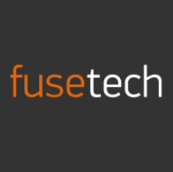The landscape of compliance management is on the brink of transformation, poised for shifts towards novel areas of emphasis. Foreseeing these changes and integrating them into your organizational strategy is pivotal to ensuring regulatory adherence and averting detrimental consequences.
In this blog post, let’s delve deeper into regulatory frameworks and security practices by examining major compliance trends projected for 2024.
To facilitate comprehension, we've categorized these trends into three groups: IT compliance, software compliance, and risk management, facilitating seamless integration into your strategic planning.
Let's embark on this journey.
Top Trends Defining Compliance in 2024
Compliance, much like other operational facets, is subject to continual evolution driven by internal and external dynamics. Whether spurred by enhancement initiatives or responsive to shifting market dynamics, IT compliance practices – spanning software and risk compliance – must adapt to meet the evolving demands and expectations of 2024 and beyond.
To aid in navigating these changes, the following list of compliance trends offer invaluable insights into the trajectory of the field in the forthcoming year.
Let's explore.
IT Compliance Trend #1 – Embracing AI in Compliance
The pervasive influence of Artificial Intelligence (AI) is reshaping the operational landscape across industries, with compliance being no exception.
AI-driven technologies are poised to revolutionize compliance processes, streamlining data gathering and analysis efforts. Leveraging vast data sets enables the identification of compliance patterns, issues, and improvement opportunities, with predictive analytics offering foresight into potential compliance challenges and facilitating preemptive measures. Nonetheless, alongside enhanced operational efficiency, ethical and equitable utilization of AI remains imperative. Transparent and accountable algorithms are pivotal, with anticipated regulations guiding the ethical deployment of this technology, necessitating compliance audits to ensure fairness, ethics, and bias mitigation.
"Tools, including AI, have matured to enable organizations to become more serious about securing the enterprise through automation, which is critical to the ability to scale IT compliance. There are several ways this will happen.
Increased ability to track and monitor health, patches, and vulnerabilities at the device level, combined with AI, can help organizations manage every device that attaches to their network (down to the mobile device level).
Monitoring, combined with AI, can become more intelligent to automate the detection of data access that’s not in compliance with set policies and prevent it."
Phyllis Drucker
Service Management Thought Leader at EZ2BGR8
IT Compliance Trend #2 - Heightened Data Protection Measures
Amid escalating concerns regarding data privacy and the proliferation of data breaches, prioritizing data protection measures is paramount within compliance frameworks.
Organizations must implement robust authentication and authorization protocols to bolster data security. Moreover, compliance frameworks are expected to evolve to accommodate emerging data privacy requirements, particularly as jurisdictions introduce or fortify data protection regulations.
The impending surge in data breaches underscores the urgency of safeguarding data from the potential vulnerabilities associated with Generative AI. While acknowledging the risks, AI also has a great potential to enhance compliance efforts, albeit with prudent oversight to prevent unauthorized data exposure.
IT Compliance Trend #3 - Enhanced Cybersecurity Focus
Within the realm of IT security, heightened regulatory scrutiny necessitates bolstering cybersecurity practices, particularly with a focus on endpoint and cloud security. Concurrently, cyber risk management initiatives are evolving, with organizations embracing advanced threat detection mechanisms and response protocols.
Principal ITSM Consultant at i3Works Ltd, Vawns Murphy advocates for the implementation of multi-factor authentication (MFA) as a proactive security measure, citing its efficacy in fortifying organizational defenses and facilitating remote zero-trust security paradigms.
Software Compliance Trend #1 - SaaS Application Compliance
In the realm of software compliance, the burgeoning prominence of SaaS applications prompts a reevaluation of data governance and user privacy protocols. Stricter regulations governing cross-border data transfers underscore the need for heightened compliance measures among SaaS providers and consumers alike.
Incorporating SaaS offerings into organizational service catalogs, as recommended by Vawns Murphy, enhances visibility and governance, mitigating the risks associated with shadow IT proliferation.
"One of the SaaS trends to watch in 2024 is the emergence of indirect usage licensing. One of the leading ERPs introduced this model just before the pandemic, much to the (usually unpleasant) surprise of many of its customers. Indirect licensing, in essence, stipulates that simply housing data in the data pool requires an end-user license – even though that data was ported in from another application.
Now that we have emerged from the pandemic, I expect more SaaS application providers to seek creative ways like this to further monetize their business. Meanwhile, it is incumbent on our Software Asset Management teams to fully comprehend and begin tracking not just direct users of software and applications but also those who are indirectly using it – and to include this in risk management discussions related to IT spending."
Doug Rabold
CXO/Founder at Bold Ray Consulting
Software Compliance Trend #2 - Cloud Compliance
The evolving landscape of cloud technologies necessitates more comprehensive regulatory frameworks to govern their utilization. Organizations must leverage adaptive capabilities to integrate evolving compliance requirements seamlessly into their strategic frameworks.
Software Compliance Trend #3 - Open Source Compliance
The burgeoning utilization of open-source components in software development underscores the importance of robust license compliance practices. Ensuring adherence to licensing terms mitigates potential legal ramifications, safeguarding against unintended consequences.
"Log4j and Apache exploits have taught most of the app dev community that the supply chain and embedding of open source software and libraries is not, by default, the most secure way to build services and products. The added complexity of embedding these tempting solutions into custom software creates a dependency that requires constraint tracking and discovery in order to respond appropriately to zero-day exploits and other vulnerabilities as they are discovered. Protecting the complete surface of your products and services becomes the new challenge and goal of great configuration management functions."
Matt Beran
Senior Product Specialist at InvGate
Risk Compliance Trend #1 - Regulatory Change Management
As global regulatory landscapes undergo rapid evolution, organizations must cultivate agility to navigate emergent regulatory paradigms, particularly within finance and technology sectors. Robust change management systems are essential, enabling organizations to adeptly respond to regulatory flux.
"Generative AI has the potential to enable improved compliance to future regulatory changes. Drawing upon regulatory data sources would enable a Generative AI solution to update all relevant knowledge artifacts and support documentation virtually instantaneously. Thus, Generative AI has the promise of mitigating regulatory risk by dramatically improving visibility to changes in the regulations as they take effect."
Doug Rabold
CXO/Founder at Bold Ray Consulting
Risk Compliance Trend #2 - Operational Resilience
In light of escalating operational risks, organizations are embracing business continuity planning to fortify operational resilience against potential crises such as cyber attacks. Regulatory mandates are anticipated to increasingly focus on mitigating operational risks across various industry verticals.
"All disaster and continuity plans and designs should include cyberattacks. Organizations should consider the ability to recover after an attack that renders their computing environment unstable. They must assess business-critical and secondary systems risk, building resiliency or restoration capability as needed. They need to move beyond evaluating the benefit of paying the ransom when an attack occurs to the resiliency to be operational in 4-24 hours, just as if their data center was destroyed."
Phyllis Drucker
Service Management Thought Leader at EZ2BGR8
Risk Compliance Trend #3 - Third-Party Risk Management
With an increasing reliance on third-party vendors, organizations must proactively assess and manage associated risks. Expanding risk management strategies to encompass supply chain resilience safeguards against diverse risks, including environmental and geopolitical factors.
Key Takeaways
The landscape of compliance is poised for significant evolution across IT, software, and risk domains. Prioritization and adaptation to organizational and industry-specific requirements are imperative when charting compliance strategies.
The trends outlined for 2024 offer valuable insights into the evolving compliance landscape, underscoring the transformative potential of AI, heightened cybersecurity imperatives, and the expanding scope of third-party risk management and regulatory change management.
By staying attuned to these trends, organizations can navigate the compliance landscape with agility and foresight, mitigating risks and leveraging opportunities for sustained success in the dynamic regulatory landscape of 2024 and beyond.








